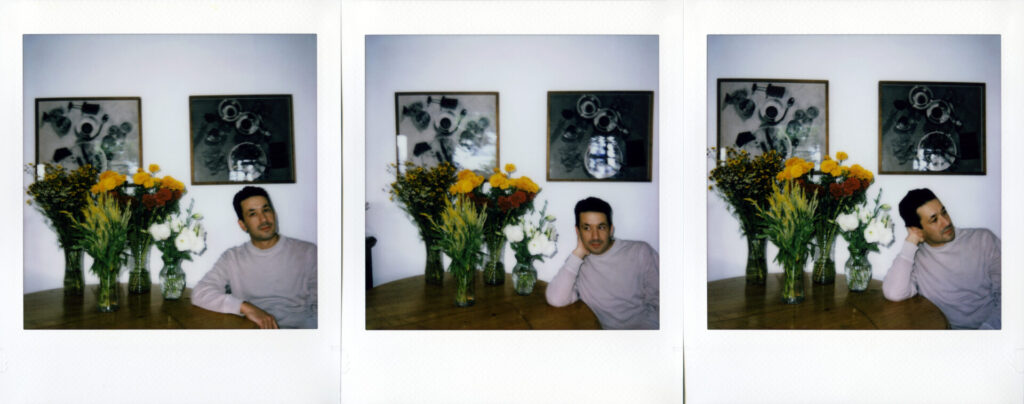On What Is Not Strange?, Tashi Wada’s music curves, steepens and plateaus like a trail on the way to a vista. The Los Angeles-based composer’s drones continuously evolve; his fractured melodies stop before they’ve started or swerve into unexpected directions, collecting surprises along the way. Throughout, Wada uses an 18th-century tuning system developed by music theorist Jean-Philippe Rameau, which coats his glistening drones and broken-down songs in dissonance, and he works with vocalist Julia Holter, percussionist Corey Fogel, violist Ezra Buchla and bassist Devin Hoff. The alternate tuning allows for his music to expand beyond just the conventional stylings of his keyboard, while his collaborators help each track grow into kaleidoscopes built from the shards of each musical phrase. More than anything, though, What Is Not Strange? is an album about choosing one winding path and following it – even if it ends up somewhere previously unknown.
Wada wrote the music of What Is Not Strange? while processing a time of life transition, during which his father, the artist Yoshi Wada, passed away, and his daughter was born. The resulting music embraces the cyclic nature of life: its darkness, its light and everything in-between. The album itself operates in a broad loop. It begins in a space of wonder, flows into the shock of grief, plunges deep into the pain of uncertainty and re-emerges at last with a sparkle of hope. Throughout, Rameau’s adjusted meantone tuning uncovers new possibilities within Wada’s keyboard playing, offering a framework for approaching his work, both as a way of viewing and understanding the keyboard and as a foundation from which the album’s melodies can emerge. “There are no rules, just conventions and received wisdom,” Wada wrote in The Wire. “Find something intriguing, dig deep, and see where it leads, one step after another.”
This adventurous approach to music dots Wada’s catalogue, like on recent collaborative albums such as FRKWYS Vol. 14 – Nue, in which he wrote minimalistic odes that roamed and meandered across different terrains. With What Is Not Strange?, he branches off from his minimalistic roots to sculpt layered and prismatic music that feel like abstract and distorted songs. Despite his music’s newfound angularity, Wada still approaches every moment with patience, gently watching how each phrase expands. Each track unfurls like a flower in the night, starting closed before opening to receive the sun’s warmth by the morning. Like the album’s overarching motion, the music’s individual parts similarly embrace cycles, always returning to ideas or fitting each jagged piece into a greater, more cohesive whole. Even the most off-kilter pairings, like a distant frenetic drum and soaring vocals, fit together like a puzzle; the tunings he explores add a grit to every harmony, giving them a sense of depth. In the process, Wada creates an intricate web of sounds guided by his thematic influences and use of alternate tuning.
While Wada spends much of What Is Not Strange? highlighting his new songwriting style, some of the most successful moments on the album come when he combines his more recent ideas with his signature drones. On ‘Flame of Perfect Form’, these two ends converge: Holter’s vocals float above a deep-sea hum, channelling the anguish of that bristling drone into her voice, while Fogel’s drums spiral into rhythmic frenzy and Buchla’s viola swirls around it all. Each instrument presents a rough-hewn phrase, weaving in and out of the fold, while the drone holds steady, grounding it all in a cavernous vibration. Slowly, a gentle song emerges from scattered debris, bursting out like a phoenix rising from the ashes who is reborn once again. This tumult filters seamlessly into the undulating magma of ‘Under the Earth’, which pairs fiery and angelic tones at-once, like heaven and hell converging into one drone set ablaze.
Those tracks have a sense of darkness, but Wada also excels in bringing his music back into the light. Wada always finds balance in his music – balance of emotions, balance of his harmonies, balance between each rough-edged melody that enters and exits from the music’s oscillations. With ‘Time of Birds’, he writes a forward-looking lament made from wobbling melodies that crash into each other. There are hints of the rubble left from the depths of earlier tracks, but this piece’s high-pitched harmonics and airy tones colour everything in with a bright sheen. A powerful keyboard melody later emerges, plodding through the hazy plumes of sound and rising above them, as Holter’s vocals converge and diverge in simple harmony. By the time the final track, ‘This World’s Beauty’, rolls around, Wada takes phrases akin to those that appeared toward the beginning of the album and filters them through a balmy lens, like the sunrise that comes after the pitch black of midnight.
And while Wada’s structure is cyclic, What Is Not Strange? remains open-ended. There are no perfect cadences to tie up every box in a perfect bow. Instead, he basks in the frayed edges, the moments in which the dissonances feel strong, and then watches where they go, even if they end up somewhere even crunchier. There’s something deeply exploratory about this style, a never-ending story to tell even as it nears its final wispy notes. With What Is Not Strange?, Wada shows us that listening is a path to discovery – and discovery is something that continues long beyond the final notes.


